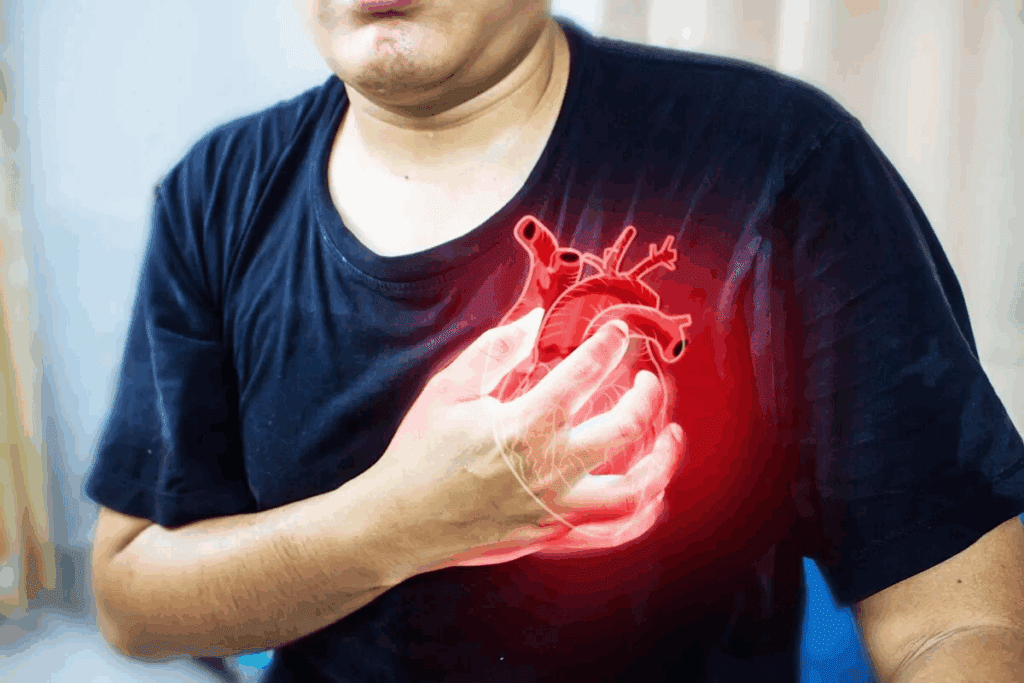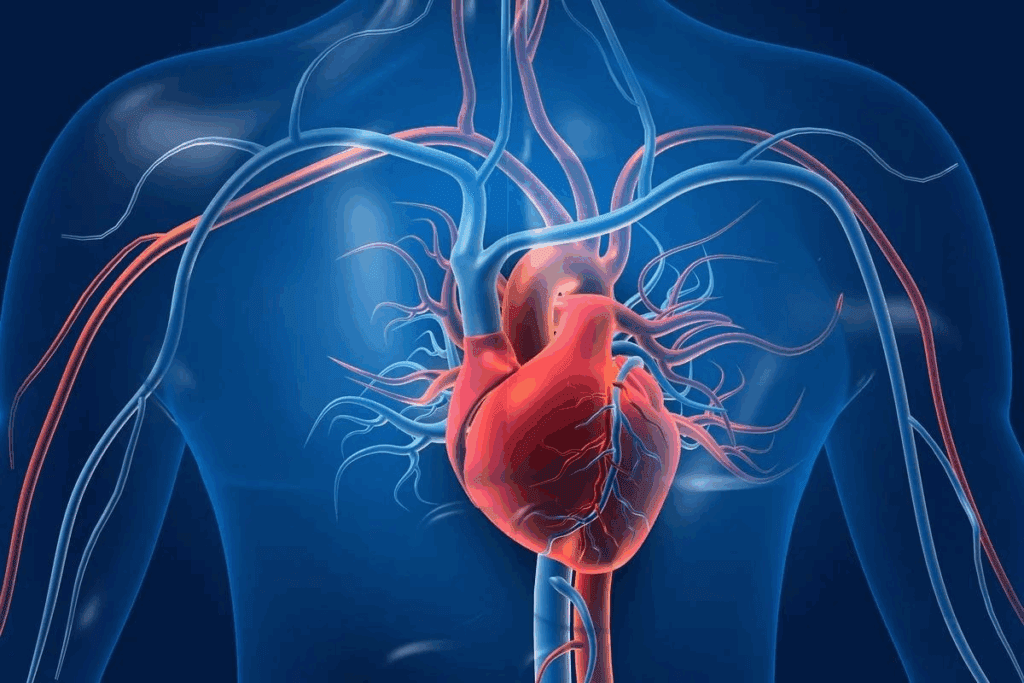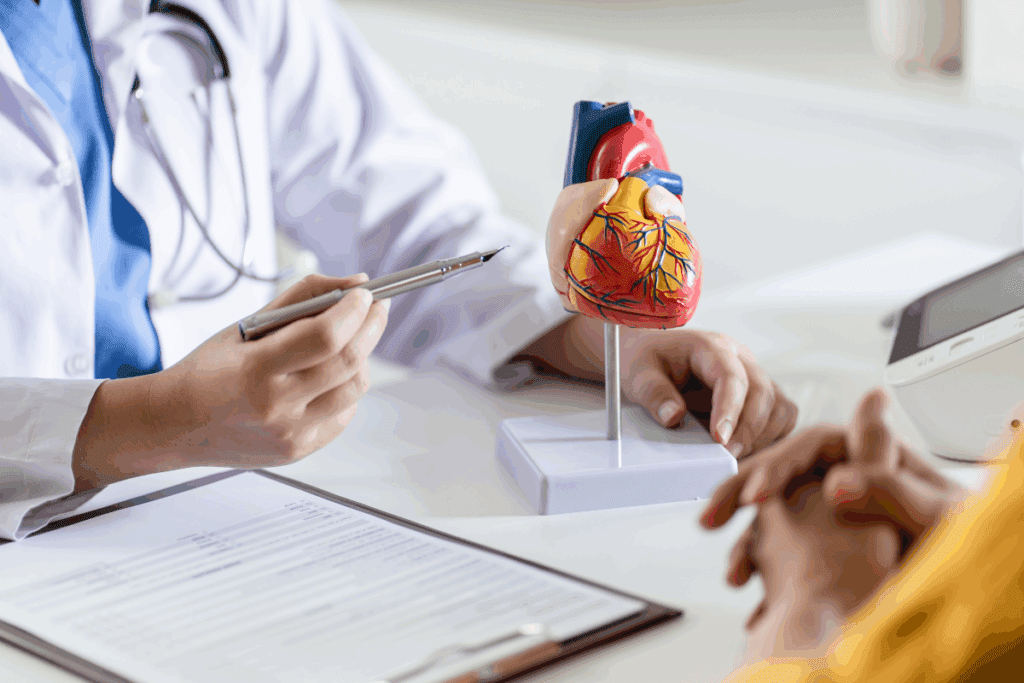Last Updated on November 25, 2025 by Ugurkan Demir

Cardiomyopathy is a heart muscle disease that can make it hard for your heart to work right. Knowing about this condition is key to managing it and its effects.
Cardiomyopathy weakens the heart muscle, making it tough for the heart to pump blood well. This can cause heart failure, where the heart can’t meet the body’s needs.
Discover what is cardiomyopathy, its link to heart failure, and key management strategies.
We at our institution offer full care and support for those with cardiomyopathy. Our team is all about giving top-notch healthcare. We make sure you get the best treatment and advice.

Cardiomyopathy is a group of heart muscle disorders that can harm how well the heart works. It’s also known as heart muscle disease. Cardiomyopathy means a disease of the heart muscle that makes it harder for the heart to pump blood to the rest of the body.
To grasp what cardiomyopathy is, we need to look at its medical terms. Terms like cardiac myopathy and miocardiopatia are the same as cardiomyopathy. They all point to a diseased heart muscle. “The term cardiomyopathy is defined as a group of diseases that affect the heart muscle, leading to impaired heart function,” as stated in various medical literature.
Cardiomyopathy affects the heart muscle, causing many problems. It can be genetic or caused by other factors, affecting people of all ages. Knowing about cardiomyopathy is key for diagnosis and treatment. Heart muscle disease cardiomyopathy shows how it affects the heart’s function.
“Cardiomyopathy is a significant cause of morbidity and mortality worldwide, necessitating a compassionate approach to its management.”
Cardiomyopathy affects many people worldwide. For example, hypertrophic cardiomyopathy affects about 1 in 500 people globally. This makes it a big public health issue.
We understand how big of a deal cardiomyopathy is. It causes many heart problems. By knowing how common it is, we can help those affected and improve their care.

Cardiomyopathy changes how the heart works. To understand this, we must first know how a healthy heart functions.
A healthy heart pumps blood well. It has four chambers: the right and left atria, and the right and left ventricles. The heart’s walls, called the myocardium, are key to its pumping action.
The heart’s structure and function are closely tied. The ventricles pump blood with high pressure. The atria, with thinner walls, act as reservoirs and help pump blood into the ventricles. The heart’s muscle works together thanks to an electrical system.
Cardiomyopathy changes the heart muscle’s structure. This can make the heart pump blood less efficiently. In dilated cardiomyopathy, the heart muscle weakens, causing chambers to enlarge.
In hypertrophic cardiomyopathy, the muscle thickens, blocking blood flow. Restrictive cardiomyopathy makes the muscle stiff, making it hard for chambers to fill with blood. These changes reduce the heart’s pumping ability, leading to heart failure and other issues.
Understanding cardiomyopathy’s effects on the heart is key. Recognizing these changes helps doctors create better treatment plans. This can improve patient outcomes.
It’s important to know about the different types of cardiomyopathy. This is because each type affects the heart muscle in its own way. We’ll look at the main types, what they do to the heart, and how they impact its function.
Dilated cardiomyopathy makes the heart’s chambers bigger. This makes it harder for the heart to pump blood. It can cause heart failure and irregular heartbeats. Symptoms include shortness of breath, fatigue, and swelling in the legs. We’ll talk more about treating this condition later.
Hypertrophic cardiomyopathy makes the heart muscle thick. This can block blood flow out of the heart. It’s often passed down in families and can cause chest pain, dizziness, and fainting. The thickened muscle can also lead to arrhythmias and, in severe cases, sudden cardiac death. Knowing the genetic link is key for family screening and prevention.
Restrictive cardiomyopathy makes the heart muscle stiff. This makes it hard for the heart chambers to fill with blood. It can lead to heart failure and is linked to diseases like amyloidosis. Symptoms include shortness of breath, fatigue, and swelling. Diagnosing this condition requires a detailed evaluation.
Arrhythmogenic right ventricular cardiomyopathy (ARVC) is rare. It replaces the right ventricle’s muscle with fat, causing arrhythmias and serious risks. ARVC is often linked to sudden cardiac death in young people. We’ll discuss how to diagnose and manage ARVC next.
In summary, each type of cardiomyopathy poses unique challenges. Knowing these differences helps doctors create better treatment plans. We’ll keep exploring the causes, symptoms, and treatments for cardiomyopathy.
It’s important to know what causes cardiomyopathy to catch it early and treat it well. This heart disease affects the heart muscle. We’ll look at the different reasons it happens to understand it better.
Genetics are a big part of cardiomyopathy. If your family has it, you might get it too. Genetic testing can find the problem early.
Some genetic conditions that cause cardiomyopathy are:
Cardiomyopathy can also come from other causes. These include:
Lifestyle and stress can also play a part. Drinking too much alcohol can cause alcoholic cardiomyopathy. Staying healthy is key to avoiding some types of cardiomyopathy.
The American Heart Association says, “Cardiomyopathy can come from genetics, infections, and lifestyle.” Knowing these causes helps us manage the disease better.
By understanding cardiomyopathy’s causes and risk factors, we can prevent and catch it early. This improves how well patients do.
It’s important to know the signs and symptoms of cardiomyopathy early. This disease affects the heart muscle and can show itself in different ways. Spotting the warning signs is key.
The first signs of cardiomyopathy can be hard to notice but are very important. Look out for:
These symptoms happen because the heart muscle gets weaker. This makes it hard for the heart to pump blood well. If you notice any of these, see a doctor right away.
As cardiomyopathy gets worse, symptoms can get more serious. Look out for:
In the worst cases, cardiomyopathy can cause heart failure. This is when the heart can’t pump enough blood. Heart failure is a serious issue that needs quick medical help.
| Symptom | Early Stage | Advanced Stage |
| Shortness of Breath | During exertion | At rest |
| Fatigue | Mild, manageable | Severe, debilitating |
| Swelling | Mild swelling in feet | Significant swelling in legs and abdomen |
Knowing the signs and symptoms of cardiomyopathy is key to managing it well. Understanding how symptoms change can help get medical help early. This can stop serious problems from happening.
Diagnosing cardiomyopathy involves several steps. It includes a clinical evaluation, medical history, and advanced tests. We aim to help you understand this process with kindness and clarity.
The first step is a detailed physical check-up and a look at your medical history. Doctors check for swelling in your legs and listen to your heart. They also review your medical history to find clues about cardiomyopathy.
Key components of the physical examination include:
After the initial check-up, several tests are used to confirm cardiomyopathy. These tests give important details about your heart’s health.
| Diagnostic Test | Purpose |
| Echocardiogram | Assesses heart structure and function, including valve function and heart muscle thickness |
| Electrocardiogram (ECG) | Records the heart’s electrical activity to identify arrhythmias or other abnormalities |
| Cardiac MRI | Provides detailed images of the heart’s structure and can identify scar tissue or other abnormalities |
As noted by the
“The use of advanced imaging techniques like cardiac MRI has significantly improved our ability to diagnose and manage cardiomyopathy.”
American Heart Association
Genetic testing is key for diagnosing inherited cardiomyopathy. It helps find specific genetic mutations. This way, doctors can confirm a diagnosis and check family members for risk.
Genetic testing can help in:
It’s important to know how cardiomyopathy can lead to heart failure. Cardiomyopathy is a disease that affects the heart muscle. It can weaken the heart’s ability to pump blood well.
Cardiomyopathy changes how the heart works. It can make the heart muscle weak. This weakens the heart’s ability to pump blood.
As the disease gets worse, the heart muscle gets weaker. This can lead to heart failure. Heart failure means the heart can’t supply enough blood and oxygen to the body.
The disease progresses in different ways. For example, in dilated cardiomyopathy, the heart’s chambers get bigger. This makes the heart less efficient. In hypertrophic cardiomyopathy, the heart muscle thickens. This can block blood flow and cause heart failure symptoms.
Heart failure from cardiomyopathy has different stages. These stages are based on symptoms and how well the heart works. The American Heart Association and the American College of Cardiology have outlined four stages: A, B, C, and D.
Knowing these stages helps manage cardiomyopathy better. Early treatment can greatly improve a patient’s life.
Healthcare providers can create better treatment plans by understanding the link between cardiomyopathy and heart failure. This approach improves patient outcomes and quality of life.
We look at the many ways to treat cardiomyopathy. Each treatment is chosen based on the type and how severe it is. The patient’s overall health also plays a big role.
Medicines are key in treating cardiomyopathy. Beta-blockers and ACE inhibitors help the heart work less hard. Diuretics help get rid of extra fluid.
Surgery is sometimes needed. This includes putting in pacemakers or ICDs (Implantable Cardioverter-Defibrillators) to control heart rhythm. Septal myectomy helps in hypertrophic cardiomyopathy by improving blood flow.
| Surgical Intervention | Purpose |
| Pacemaker | Regulate heart rhythm |
| ICD | Prevent sudden cardiac death |
| Septal Myectomy | Improve blood flow in hypertrophic cardiomyopathy |
Changing your lifestyle is important for managing cardiomyopathy. Eating well, exercising, and not smoking are key. Cardiac rehab programs offer support and guidance.
In severe cases, a heart transplant might be needed. This is a big surgery where a new heart is put in. VADs (ventricular assist devices) also help by supporting the heart’s pumping.
Knowing about all the treatment options helps patients with cardiomyopathy. They can work with their doctors to create a plan that improves their life and chances of recovery.
It’s important to understand the prognosis and quality of life with cardiomyopathy. This heart muscle disease can affect how long you live and your daily activities.
Managing cardiomyopathy means regular checks and care. Patients should have regular evaluations to track their condition and adjust treatments.
Long-term monitoring includes:
| Monitoring Test | Frequency | Purpose |
| Echocardiogram | Every 6-12 months | Assess heart function and structure |
| Electrocardiogram (ECG) | At each visit | Monitor heart rhythm and detect arrhythmias |
| Blood Tests | Every 3-6 months | Check for signs of heart failure or other complications |
To stop cardiomyopathy from getting worse, you need a plan. This includes lifestyle changes, sticking to your treatment, and regular doctor visits.
Lifestyle Changes:
Adherence to Treatment:
By following these steps and working with your healthcare team, you can improve your outlook and quality of life with cardiomyopathy.
It’s key to understand cardiomyopathy to manage it well and help patients. This condition damages the heart muscle and can lead to heart failure if not treated. We’ve looked at what cardiomyopathy is, its types, causes, symptoms, how it’s diagnosed, and how it’s treated.
Cardiomyopathy is a group of diseases that harm the heart muscle, making it work poorly. Knowing about cardiomyopathy helps patients and doctors create good care plans. Treatment includes medicines, lifestyle changes, and sometimes surgery or a heart transplant.
Understanding cardiomyopathy and its impact on the heart helps people deal with their diagnosis and treatment. It’s vital to keep an eye on the condition over time and follow up regularly. With the right care, patients can live better lives and have better outcomes.
Cardiomyopathy is a heart disease that makes it hard for the heart to pump blood well. It changes the heart muscle, leading to poor blood flow.
Cardiomyopathy is a group of diseases that harm the heart muscle. It makes the heart work abnormally. It’s also known as cardiac myopathy or miocardiopatia.
Yes, it can. As it gets worse, the heart can’t pump blood well. This might lead to heart failure.
There are several types, like dilated cardiomyopathy and hypertrophic cardiomyopathy. Each affects the heart differently.
It can be caused by genes or other conditions. Risk factors include family history and diseases like high blood pressure.
Doctors use tests like echocardiography and MRI to diagnose it. They also look at your medical history and do a physical exam.
Treatments include medicines and surgery. Lifestyle changes and rehabilitation are also important. In severe cases, a heart transplant might be needed.
Some types can’t be prevented, but managing risk factors helps. A healthy lifestyle can lower the risk of some types.
It depends on the type and how well it’s managed. With the right care, many people can live active lives.
It can make everyday activities hard due to symptoms like fatigue. But, with the right treatment, many people can live well.
Subscribe to our e-newsletter to stay informed about the latest innovations in the world of health and exclusive offers!